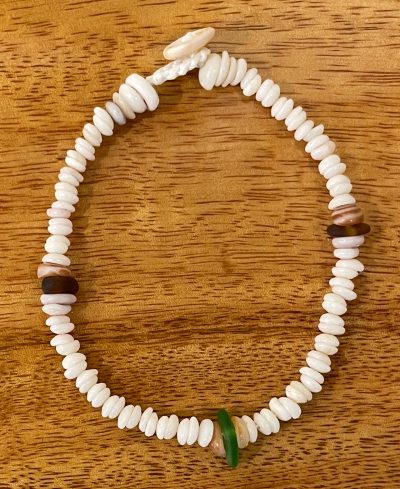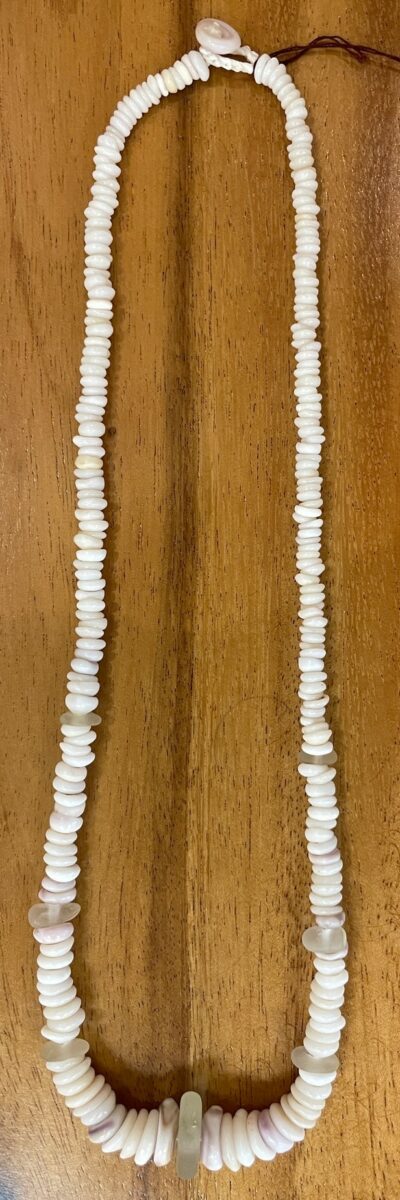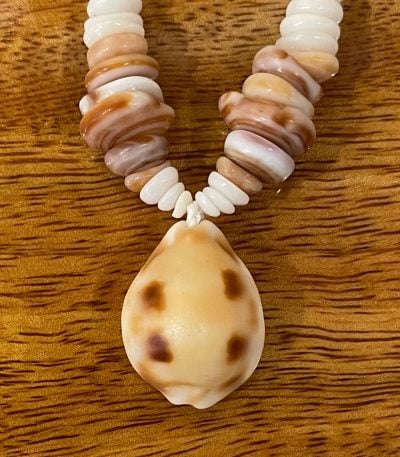
Pono Pukas
For each cone shell to become a puka it must make an amazing journey from its life on the ocean floor all the way up to the seashore. The Hawaiian word “puka” means hole, describing the small hole in the middle of these precious shells. The process of making these creations begins by knowing where the secluded secret beaches with the best shells are, special knowledge that has taken a lifetime to gather.
“The puka shells in my pieces are 100% authentic Hawaiian pukas harvested from the islands of Kauai, Oahu, and Maui. Our family often camps on the sand dunes to be the first ones on the beach in the early morning light. The pukas are harvested by hand, one shell at a time, then cleaned, drilled, and strung as found — I don’t add or polish anything, as the edges of each shell have already been gently sanded by the ocean waves. Mahalo nui loa for your patronage.” ~Pono Pukas
The Puka Shell Story
Puka shells, the naturally-formed, rounded cone shell fragments suitable for stringing, are hard to find nowadays. True puka jewelry is now uncommon, making pieces like these wearable collectors’ items. Pono Pukas’ shells are strung on incredibly strong, waterproof string and are safe to wear in the water. No artificial colors of any kind are ever used and no sea creatures are harmed.
In modern times, beads cut from other types of shell — or even plastic! — are used to make imitation puka jewelry. If the edges of the shell beads are chipped, the shells were harvested and manually broken into shape. If the “puka” or central hole is perfectly circular and parallel-sided, then the hole was drilled by humans. A very glossy patina indicates that the shells in a necklace have been tumble polished instead of naturally sanded by their journey through the sea.




















